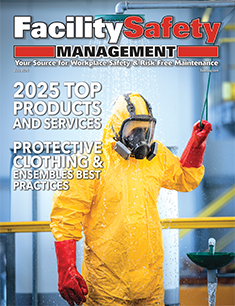July 2025
 |
Inside the July Issue |
Conveyor Safety and the
Return on Prevention
BY JERAD HEITZLER
 Protecting workers should be the top
priority for any employer, especially
those on the front line of materials processing.
Beyond the substantial financial
consequences of a workplace injury
or fatality, the impacts are felt profoundly
by an employee’s family, their
coworkers, and the wider community.
Protecting workers should be the top
priority for any employer, especially
those on the front line of materials processing.
Beyond the substantial financial
consequences of a workplace injury
or fatality, the impacts are felt profoundly
by an employee’s family, their
coworkers, and the wider community.
Thus, investing in safe, well-engineered
equipment and prevention-focused
training that helps protect workers
from injury or illness is essentially investing
in people, company culture, and
the community. And Martin’s technicians
are increasingly applying their expertise
to help operators control
maintenance risks by sharing their
knowledge and installing equipment that
improves safety.
Although return on investment (ROI) is a common calculation when installing new conveyor accessories,
some safety experts emphasize the return on prevention
(ROP). This long-term strategy prioritizes equipment
with safety engineered into the design, allowing for more ergonomic
servicing, faster and easier access, and other improvements
that make maintenance less dangerous and more
desirable to do. Although safer equipment is typically a
larger initial capital investment, the whole life return is in
faster maintenance with less downtime, longer equipment
life, and, importantly, a considerably lower chance of an incident,
reducing the overall cost of operation.
The Real Costs of ROI
Calculating return on investment (ROI) on conveyor safety
is specific to each operation, but in general, they can be broken
down into “direct costs” and “indirect costs”:
• Direct costs are explicitly associated with an accident or
illness. In general, these include fines, medical bills, insurance
premiums, indemnity payments and temporary
disability payments.
• Indirect costs include a variety of other expenses resulting
from the incident. They include:
- Cleanup time and product loss
- Equipment repair / replacement
- Purchase / installation of safety
components
- Overtime to fill in for the missing
worker
- Cost of hiring, training and equipping
new employees
- Legal fees and litigation costs
- Increased insurance premiums
- Production delays and missed shipment
targets
- Reduced employee morale, greater
absenteeism
- Negative publicity
- Increased scrutiny by regulators.
The Price of Recovering
From An Accident
To demonstrate the benefits of safety
to a company’s bottom line, OSHA created
the online tool, ‘$afety Pays’, which
uses company-specific economic information
to assess the potential economic
impact of occupational injuries on that
firm’s profitability. Full story »
today's News
APA Safety and Education Foundation Launches Animated "Explosive Mistakes: Don't Be That Guy"
SOUTHPORT, N.C. -- The APA Safety and Education Foundation announced the launch of two new fireworks safety video series as part of its ongoing nationwide effort to reduce preventable injuries during the Independence Day holiday.
At SHRM 2025, Yuna Health is Rewriting Workplace Mental Health
SAN FRANCISCO and SAN DIEGO -- Yuna Health unveiled the first fully AI-powered mental health coaching platform built for enterprise workforces. Yuna provides employees with instant, private emotional support—no appointments, no stigma, and at a fraction of traditional care costs.
Georgia-Pacific Safety Initiatives Earn Corrugated Industry Recognition
ATLANTA, GA -- Georgia-Pacific’s commitment to the safety of their employees is on full display at four of their corrugated facilities after earning recognition from the Fibre Box Association (FBA) for their innovative, bottom-up safety solutions.
ASSP launches innovative Safety Trekr AI
PARK RIDGE, IL -- The American Society of Safety Professionals has launched ASSP Safety Trekr AI, a groundbreaking artificial intelligence-powered search tool designed to fundamentally change how safety professionals access critical workplace safety and health guidance.
NSC Enhances Leadership Structure
WASHINGTON, DC -- The National Safety Council announced a strategic enhancement to its leadership structure, creating a distinct president role aimed at accelerating the organization's impact on safety initiatives.









